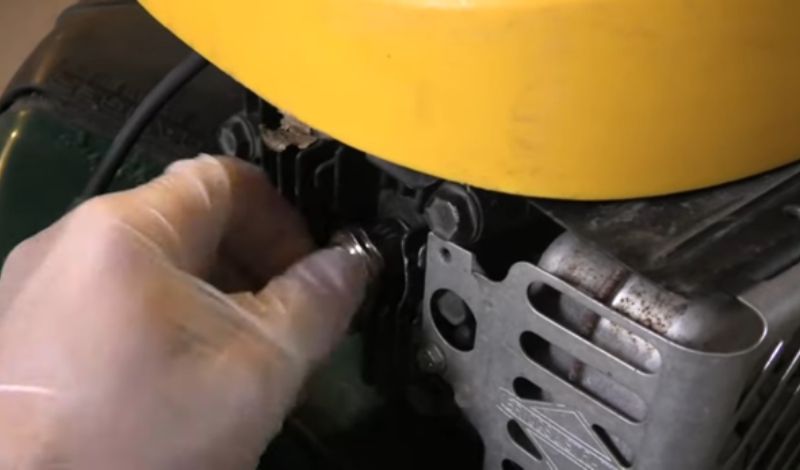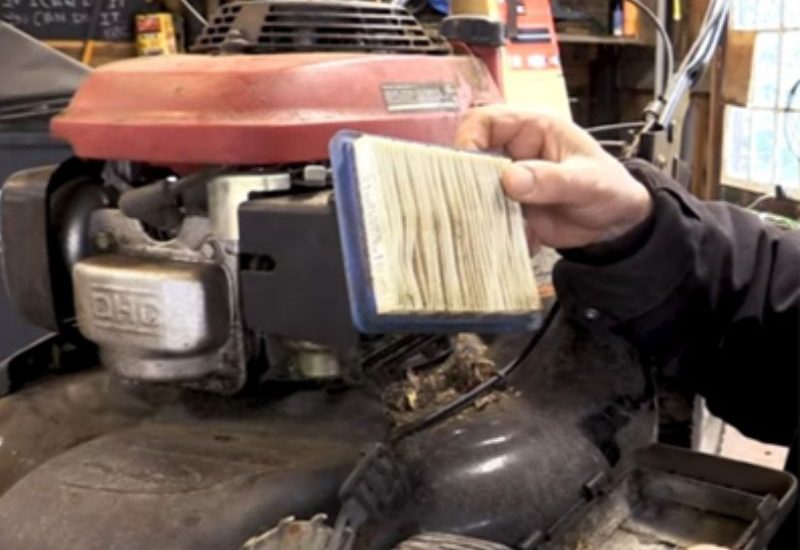Polka Dot Begonia Care: Tips for Growing and Maintaining Your Plant
Polka dot begonia, scientifically known as Begonia maculata, is a popular houseplant that is loved for its unique appearance. The plant features striking silver polka dots on its dark green leaves, making it a stunning addition to any indoor space. However, caring for this plant can be a bit tricky, and it requires a certain level of attention and care to thrive.
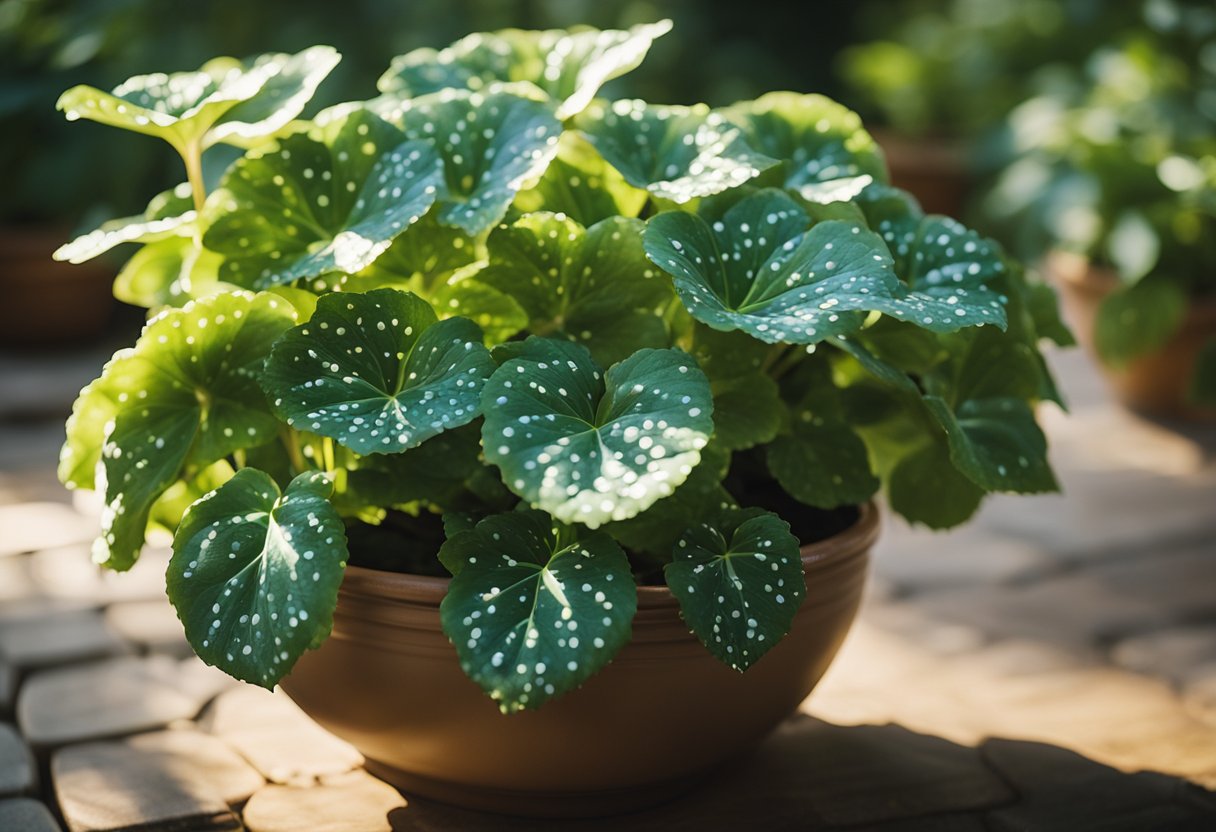
To ensure that your polka dot begonia stays healthy and happy, it is important to understand its specific care needs. This article will provide a comprehensive guide to polka dot begonia care, covering everything from watering and lighting to soil and fertilization. Whether you are a seasoned plant parent or a beginner, this guide will equip you with the knowledge you need to keep your polka dot begonia thriving for years to come.
Polka Dot Begonia Overview
Polka Dot Begonia, also known as Begonia maculata, spotted begonia, clown begonia, or wightii, is a popular houseplant that belongs to the Angel Wing Begonia group. This plant is native to Brazil and is characterized by its unique polka dot pattern on its leaves.
The Polka Dot Begonia is a cane begonia, which means it has a thick stem that stores water. This evergreen plant can grow up to 3 feet tall and 2 feet wide when given the right conditions.
One of the most distinctive features of the Polka Dot Begonia is its variegation, which ranges from white to silver and pink to red. The leaves are asymmetrical and have a wavy edge, adding to the plant’s overall charm.
To care for your Polka Dot Begonia, it’s important to keep it in a well-lit area with indirect sunlight. The plant prefers moist soil and high humidity, so it’s recommended to mist the leaves regularly.
In terms of propagation, the Polka Dot Begonia can be propagated through stem cuttings or by division. When pruning, it’s important to cut back to a node to encourage new growth.
Overall, the Polka Dot Begonia is a beautiful and unique addition to any indoor garden. With proper care, this plant can thrive and add a touch of natural beauty to your home.
Optimal Growing Conditions
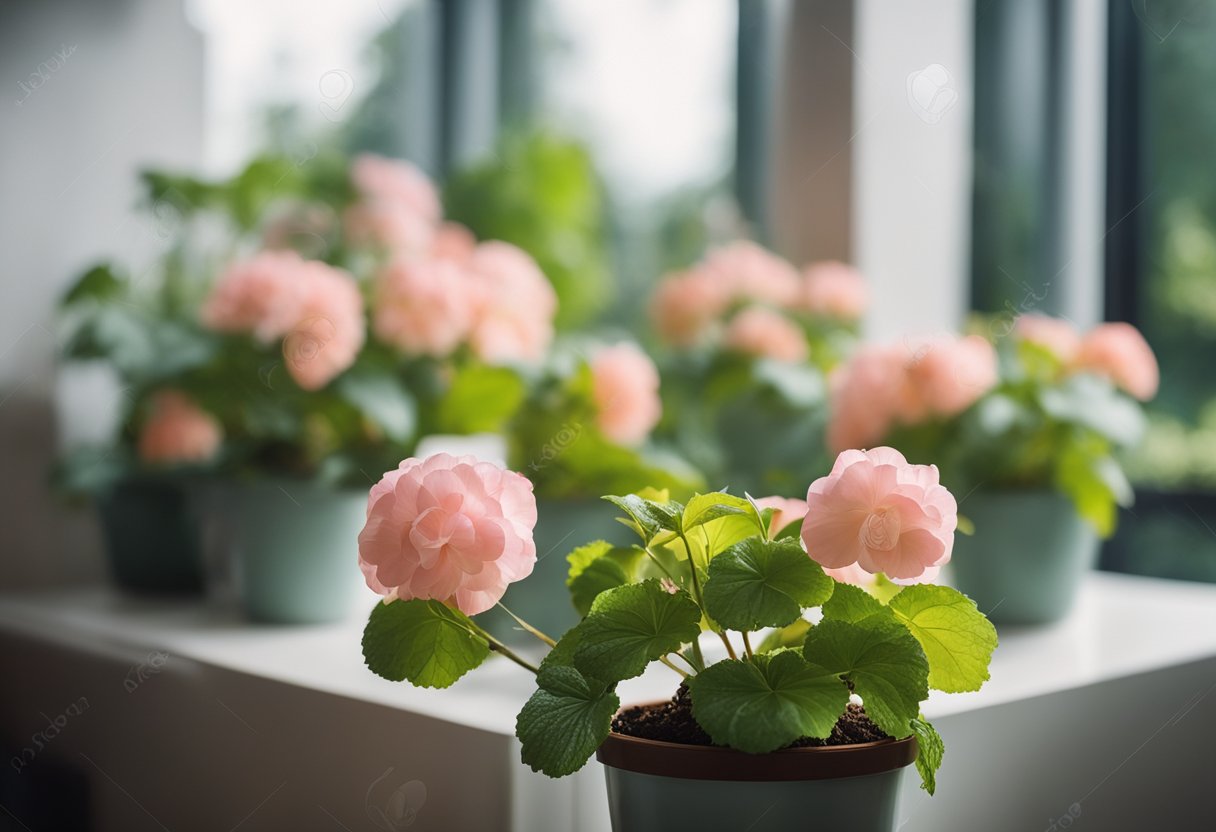
Light Requirements
Polka dot begonias thrive in bright, indirect light. They should be placed near a window that receives plenty of light but not direct sunlight. Direct sunlight can scorch the leaves and cause damage to the plant. If the plant is not receiving enough light, the leaves will turn yellow and drop off.
Temperature and Humidity
Polka dot begonias prefer warm and humid environments. They should be kept in a room with temperatures between 65 and 75 degrees Fahrenheit. A humidifier can be used to maintain high humidity levels, which will help prevent the leaves from drying out and becoming brittle. If the humidity levels are too low, the leaves will start to curl and turn brown.
Watering and Soil
Polka dot begonias need to be watered regularly, but they should not be overwatered. The soil should be kept moist but not waterlogged. A well-draining potting mix with perlite can be used to ensure proper drainage. The plant should be watered when the top inch of soil feels dry to the touch. Overwatering can cause the roots to rot and lead to the death of the plant.
Planting and Repotting
Choosing the Right Pot
When it comes to polka dot begonia care, choosing the right pot is crucial. The pot should be just slightly larger than the root ball of the plant. A pot that is too large can lead to overwatering and root rot. It’s also important to choose a pot with proper drainage holes to prevent water from pooling at the bottom.
Clay pots are a popular choice for polka dot begonias because they are porous and allow for good airflow to the roots. However, they can dry out quickly and may require more frequent watering. Plastic pots are another option, but it’s important to choose a high-quality pot that won’t break down over time.
Potting Soil and Mix
Polka dot begonias prefer well-draining soil that is rich in organic matter. A well-draining potting mix can be made by combining equal parts of peat moss, perlite, and vermiculite. Alternatively, a high-quality well-draining potting soil can be purchased from a garden center.
When repotting a polka dot begonia, gently loosen the roots and remove any dead or damaged ones. Place the plant in the new pot and fill in around the root ball with fresh potting soil. Water the plant thoroughly and allow the excess water to drain out of the bottom of the pot.
Overall, proper planting and repotting are essential for the health and growth of polka dot begonias. By choosing the right pot and soil, and repotting as needed, these beautiful plants can thrive in any home or garden.
Feeding and Fertilization
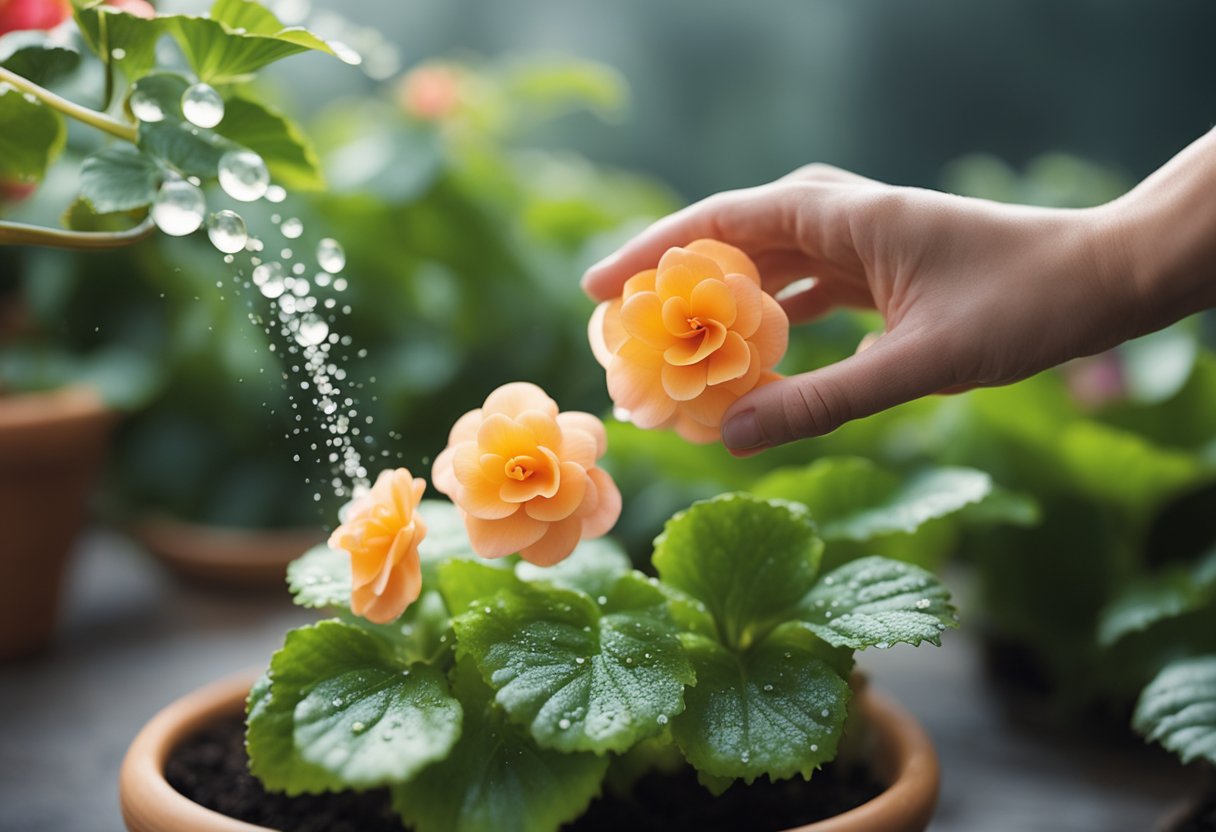
Polka dot begonias require regular feeding and fertilization to promote healthy growth and vibrant foliage. Fertilizer provides essential nutrients that may be lacking in the soil, ensuring that the plant has everything it needs to thrive.
When selecting a fertilizer for your polka dot begonia, it is important to choose one that is balanced and contains equal amounts of nitrogen, phosphorus, and potassium. A balanced fertilizer will promote healthy growth and encourage the development of strong roots and foliage.
It is recommended to fertilize your polka dot begonia every two weeks during the growing season, which typically lasts from spring through summer. During the fall and winter months, you can reduce the frequency of fertilization to once a month.
When applying fertilizer, it is important to follow the manufacturer’s instructions carefully and avoid over-fertilizing, which can lead to burned or damaged foliage. It is also important to water your plant thoroughly before and after applying fertilizer to prevent the roots from becoming damaged.
In addition to traditional fertilizer, you can also use organic alternatives such as compost or fish emulsion to provide your polka dot begonia with essential nutrients. These options can be especially beneficial for those who prefer to use natural methods for plant care.
Overall, regular feeding and fertilization are essential for maintaining the health and beauty of your polka dot begonia. By choosing a balanced fertilizer and following the recommended guidelines for application, you can help ensure that your plant thrives and continues to produce vibrant foliage for years to come.
Pruning and Propagation
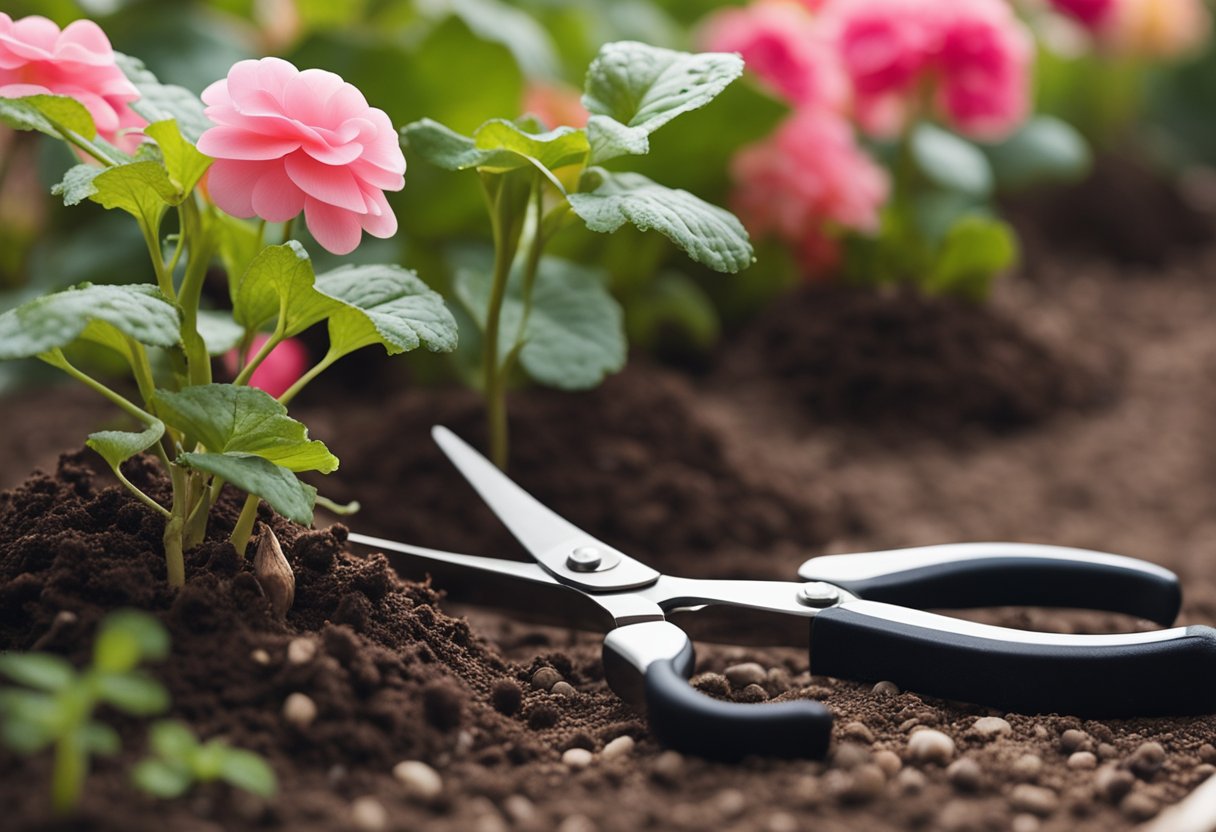
Pruning Techniques
Polka dot begonias can become leggy if not pruned regularly. Pruning is important to maintain a bushy and healthy plant. The best time to prune a polka dot begonia is in the spring or early summer. Pruning should be done with clean and sharp pruning shears to avoid any damage to the plant.
To prune a polka dot begonia, start by removing any dead or damaged leaves and stems. Then, cut back any long or leggy stems to encourage new growth and create a fuller plant. It is important to cut the stem just above a leaf node to ensure new growth will occur.
If the plant has become too bushy, it can also be pruned to create a more open and airy plant. This can be achieved by selectively removing some of the stems and leaves, but be careful not to remove too much at once as it can shock the plant.
Propagation Methods
Polka dot begonias can be propagated easily using stem cuttings. To propagate a polka dot begonia, select a healthy stem with at least two leaves and a node. Cut the stem just below the node and remove the bottom leaf.
Dip the cut end of the stem in rooting hormone and plant it in a pot with well-draining soil. Keep the soil moist and place the pot in a warm and bright location. New growth should appear within a few weeks.
Another method of propagation is by dividing the plant. This can be done when repotting the plant. Gently remove the plant from its pot and separate the roots into smaller sections. Each section should have at least one stem and a few leaves. Plant each section in its own pot with well-draining soil and water thoroughly.
Overall, pruning and propagation are important aspects of polka dot begonia care. By following these techniques, you can maintain a healthy and beautiful plant.
Common Pests and Diseases
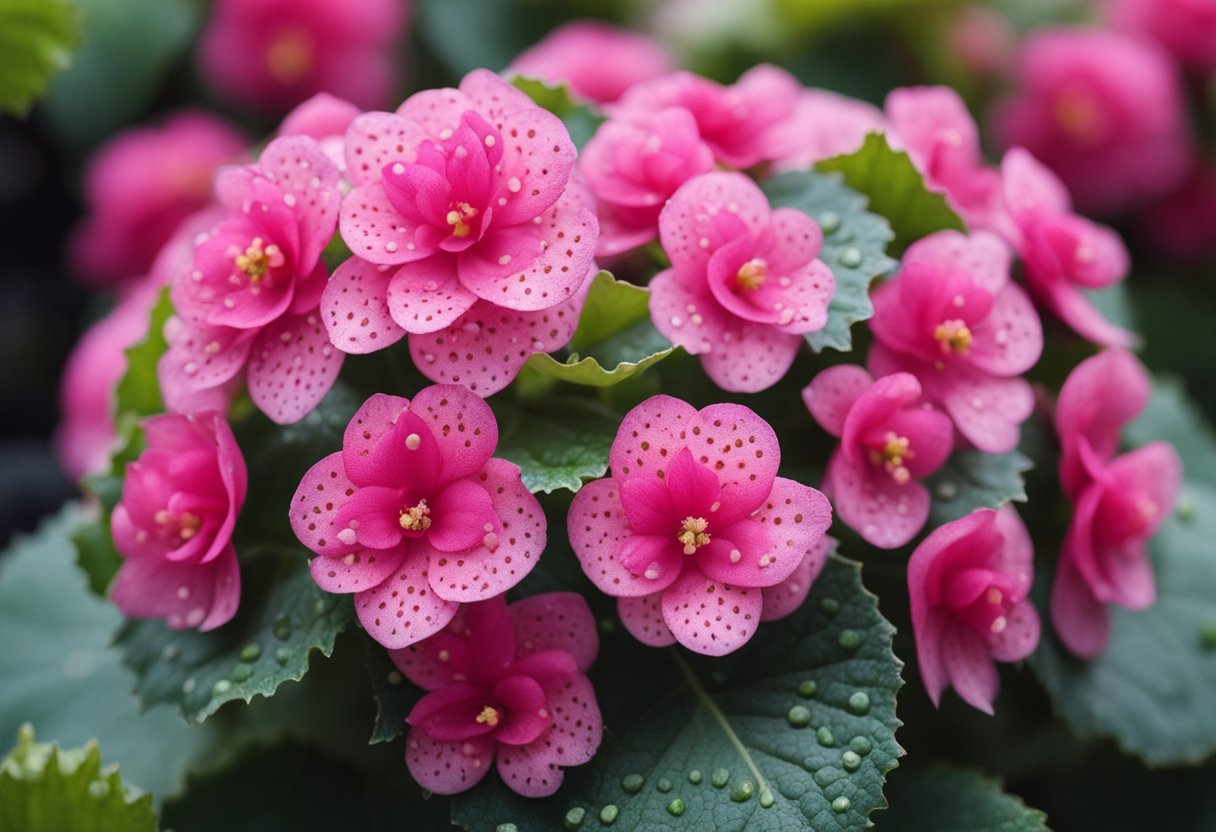
Pest Infestations
Polka dot begonias are prone to pest infestations, especially when they are not cared for properly. Two of the most common pests that can affect these plants are mealybugs and aphids.
Mealybugs are small, white, cotton-like insects that can be found on the leaves and stems of the plant. They feed on the sap of the plant and can cause stunted growth, yellowing of leaves, and even death of the plant if left untreated. To get rid of mealybugs, one can use a cotton swab dipped in rubbing alcohol to wipe them off the plant.
Aphids are small, pear-shaped insects that can be green, yellow, or brown in color. They feed on the sap of the plant and can cause curling of leaves, stunted growth, and yellowing of leaves. To get rid of aphids, one can use a mixture of water and dish soap to spray the plant, or introduce natural predators like ladybugs to the environment.
Disease Prevention
Polka dot begonias can also be affected by various diseases, including powdery mildew and root rot. Powdery mildew is a fungal disease that can cause a white, powdery coating on the leaves of the plant. It is caused by high humidity and poor air circulation. To prevent powdery mildew, one should ensure that the plant is not overcrowded and has good air circulation. If the plant does get infected, one can use a fungicide to treat it.
Root rot is a fungal disease that is caused by overwatering and poor drainage. It can cause the roots of the plant to rot, which can lead to wilting and death of the plant. To prevent root rot, one should ensure that the plant is not overwatered and has good drainage. If the plant does get infected, one should remove it from the soil, trim the affected roots, and repot it in fresh soil.
By taking proper care of their polka dot begonias and being vigilant for pests and diseases, one can ensure that their plants remain healthy and vibrant.
Special Considerations
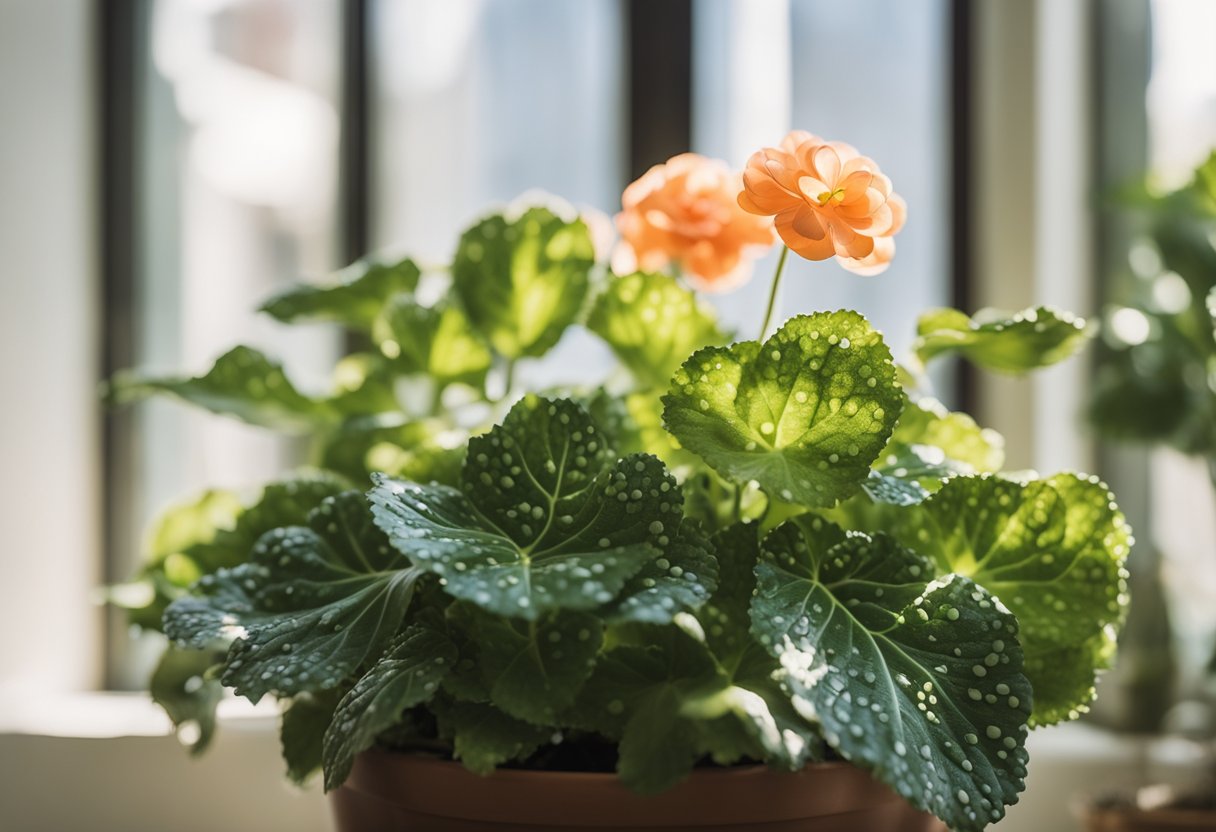
Toxicity Concerns
Polka dot begonias are toxic to humans and animals if ingested. The plant contains calcium oxalate crystals that can cause irritation and swelling in the mouth, throat, and digestive tract. It is important to keep the plant out of reach of children and pets.
Environmental Stress
Polka dot begonias are sensitive to environmental stress and can show signs of distress if not properly cared for. Overwatering can lead to root rot, causing the plant to drop leaves and develop yellow leaves. Underwatering can cause the leaves to wilt and turn brown at the tips.
Too much direct sunlight can also burn the leaves, causing them to turn brown and crispy. It is recommended to place the plant in a bright, indirect light location. If the plant is not getting enough light, it may become leggy and lose its compact shape.
In conclusion, proper polka dot begonia care is essential to keep the plant healthy and thriving. By avoiding overwatering, providing proper lighting, and keeping the plant away from curious pets and children, you can enjoy the beauty of this unique plant in your home or office.
Flowering and Aesthetic Appeal

Polka dot begonias are known for their beautiful and unique foliage, but their flowers are equally stunning. In this section, we will discuss the flower development and how to maintain the plant’s aesthetics throughout the blooming period.
Flower Development
Polka dot begonias produce delicate flowers that come in shades of white and pink. The flowers bloom in clusters and can last for several weeks. However, as with any flowering plant, the blooms will eventually fade and wilt.
To encourage blooming, it is important to provide the plant with proper care. This includes regular watering, fertilization, and pruning. Deadheading spent blooms will also encourage the plant to produce more flowers.
Maintaining Aesthetics
In addition to proper care, there are a few things you can do to maintain the aesthetic appeal of your polka dot begonia. One of the most important is to keep the foliage clean and free of dust and debris. This can be done by wiping the leaves with a damp cloth or misting them with water.
Another way to enhance the plant’s aesthetics is to showcase its unique silver spots or macula. These silver polka dots are a defining feature of the plant and can be highlighted by placing it in a brightly lit area.
Finally, it is important to pay attention to the plant’s red leaf undersides. These undersides can add a pop of color to the plant and should be visible in order to fully appreciate the plant’s beauty.
By following these tips, you can ensure that your polka dot begonia remains healthy and beautiful throughout the blooming period.
Additional Tips for Success

Polka dot begonias are relatively easy to care for, but there are a few additional tips that can help ensure their success.
Misting
Polka dot begonias prefer a humid environment, so misting the leaves regularly can help keep them healthy. Use room temperature water and mist the leaves lightly, being careful not to saturate them. Misting once or twice a week should be sufficient.
Pebble Tray
Another way to increase humidity around the plant is to use a pebble tray. Fill a shallow tray with pebbles and water, and place the pot on top of the pebbles. As the water evaporates, it will create a humid microclimate around the plant.
pH
Polka dot begonias prefer slightly acidic soil with a pH between 5.5 and 6.5. Test the soil periodically with a pH meter or test kit, and adjust the pH if necessary. Adding sulfur or aluminum sulfate can help lower the pH, while adding lime can raise it.
Fertilizer
Polka dot begonias benefit from regular fertilization during the growing season. Use a balanced fertilizer with equal amounts of nitrogen, phosphorus, and potassium, and apply it every two to four weeks. Be sure to follow the manufacturer’s instructions for application rates and timing.
By following these additional tips, you can help ensure that your polka dot begonia thrives and remains healthy.
Frequently Asked Questions
How should I water my Polka Dot Begonia to maintain optimal health?
Polka Dot Begonias prefer to be kept in moist soil but not soggy. It is recommended to water your plant thoroughly when the top inch of soil is dry to the touch. Make sure to allow excess water to drain out of the pot to prevent root rot. Overwatering can be detrimental to the health of your plant.
What are the ideal lighting conditions for a Polka Dot Begonia?
Polka Dot Begonias thrive in bright, indirect light. Direct sunlight can scorch their leaves, so it is best to keep them in a location with filtered light. A north-facing window or a spot near a window with sheer curtains is ideal.
Which type of soil mixture is best for Polka Dot Begonia growth?
Polka Dot Begonias prefer well-draining soil that is rich in organic matter. A mixture of peat moss, perlite, and vermiculite is a good choice. Avoid using heavy potting soil that can retain too much moisture.
Can Polka Dot Begonias be safely kept around pets?
Polka Dot Begonias are toxic to pets if ingested. It is recommended to keep them out of reach of pets or to choose a different plant if you have pets that like to chew on plants.
What is the appropriate humidity level for a Polka Dot Begonia?
Polka Dot Begonias prefer high humidity levels, around 50-60%. This can be achieved by placing a tray of water near the plant or by using a humidifier.
How can I encourage my Polka Dot Begonia to bloom?
Polka Dot Begonias bloom in the spring and summer months. To encourage blooming, make sure your plant is getting enough light and water. You can also fertilize your plant with a balanced fertilizer every two weeks during the growing season.

